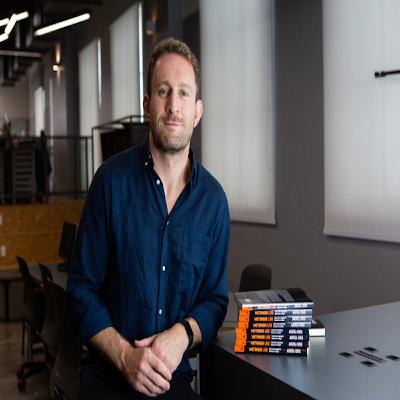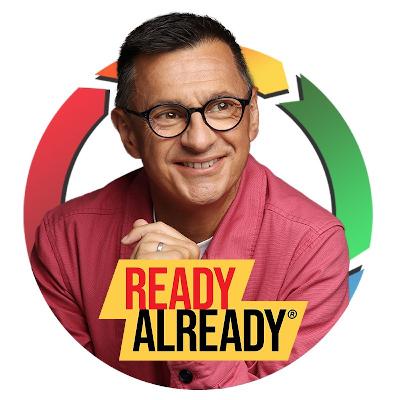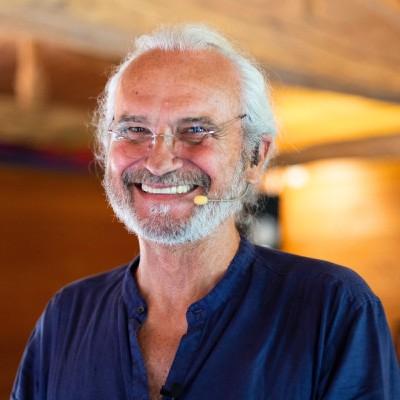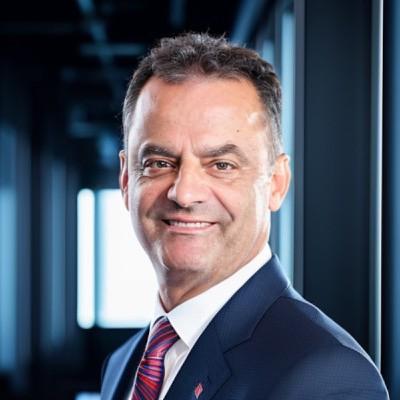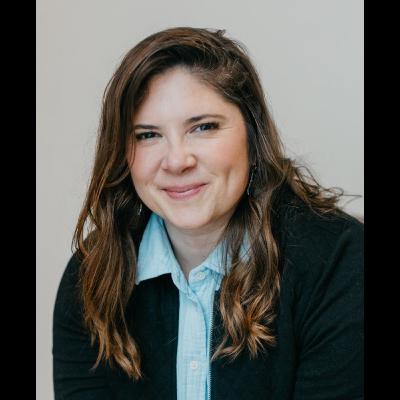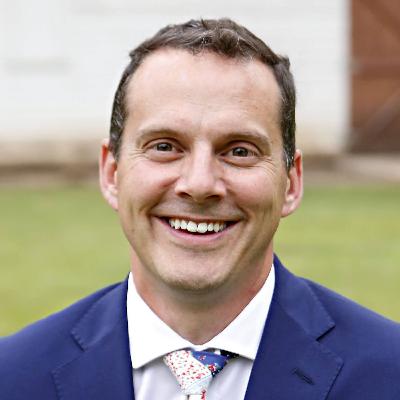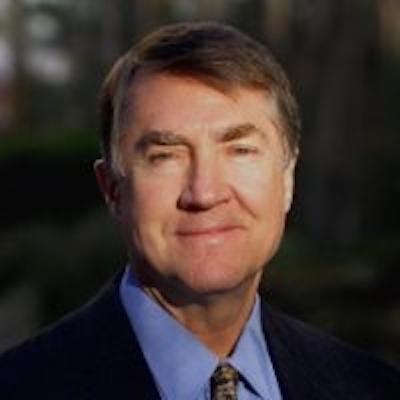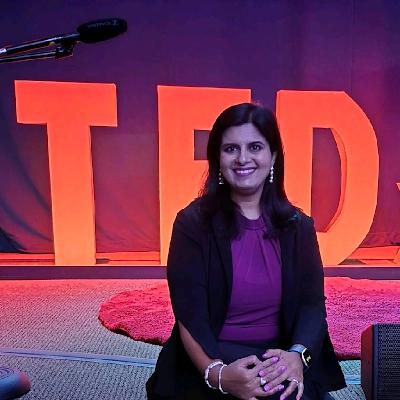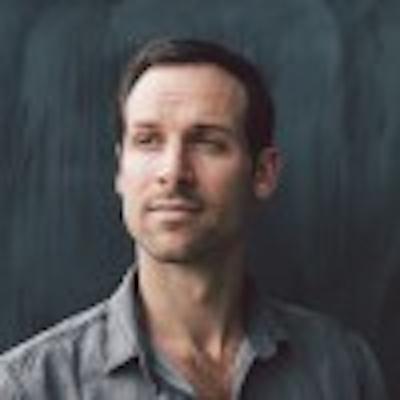Discover Let's talk Transformation : The business leaders podcast
Let's talk Transformation : The business leaders podcast

Let's talk Transformation : The business leaders podcast
Author: Suzie Lewis
Subscribed: 5Played: 414Subscribe
Share
© Copyright 2025 Suzie Lewis
Description
"Let's talk Transformation" is a podcast for busy yet curious people who want to stay connected. Bite sized chunks of thoughts and ideas on transformation and change to inspire and inform you - be it about digital, culture, innovation, change or leadership... ! Connect with us to listen to dynamic and curious conversations about transformation.
145 Episodes
Reverse
"The future won’t belong to humans or machines, but to those who master the hybrid skill set combining AI literacy and human literacy."The future of work is not about humans versus machines. Instead, it belongs to those who master a unique hybrid skill set. This blend combines AI literacy with essential human capabilities. Literacy in today's world lies in the ability to learn, unlearn and relearn - this has never been more true as it is in today's partnership with Agentic AI. Andréa and I delve into the what these combined forces could look like, and how to build the framework for operational implementation. Digital transformation requires a hybrid skill set that fulfils the three different facets of transformation (cognitive, behavioural and emotional), which in turn align with the aspects of workplace culture (how we think, act and interact). We discuss how to build a culture of trust in AI, essential for successful collaboration and highlight a critical distinction : humans interpret data semantically, giving it meaning and purpose, while AI processes it syntactically, based on patterns and probabilities. This difference impacts decision-making and ethical considerations. Leaders of the future must be honest about and clearly see what tasks should be augmented using AI and how the time saved should be spent, i.e. what does AI do best now and, consequently, what should humans do better?How are you ensuring that you, your teams & your organisation are developing the skills necessary to complement AI’s analytical power and drive results together. The main insights you'll get from this episode are : - Democratising access to a hybrid skill set means defining how to navigate the ‘fear vs. opportunity’ narrative of human potential in a world of AI, harking back to ‘man vs. machine’ as opposed to embracing a ‘man with machine’ approach.- Digital transformation requires a hybrid skill set that fulfils the three different facets of transformation (cognitive, behavioural and emotional), which in turn align with the aspects of workplace culture (how we think, act and interact).- The cognitive transformation element, i.e. decision-making, is the most problematic for leaders as humans still believe in the old way of making decisions; leaders are most exposed to this risk due to their past successes.- In the words of Rasmus Hougaard, “ego is the worst enemy of leadership” and hampers effective decision-making - AI makes new things possible and humans are taken aback by the exponential rate at which we must learn and unlearn.- Prompting, data sense-making and re-perception mean that we need to craft better input for AI but also ask humans better questions - unexpected questions open our minds to novelty and creativity.- Our inherited educational model rewards good answers, not good questions, yet this stifles creativity and re-perception; the latter goes against the human (and educational) grain, but AI tools represent a good sparring partner.- Rather than a product-centric approach, we are now called upon to make sense of data, but AI and humans interpret data differently: humans interpret it semantically (adding their own perspective); AI interprets it syntactically (as tokens without understanding meaning).- The problem inherent to AI is that it does not understand or give meaning to its decisions and has no conscience about the action taken - humans must have responsibility for giving data meaning and not outsource this to AI.- AI learns on a binary basis without context; tasks that are too demanding...
"Any AI you use today will be the worst AI you will use. You need to really learn how to challenge AI and learn how to have AI challenge you."Rasmus and I delve into the research and questions of how leaders can embrace AI to become more human in their leadership, and how can this accompany them on the journey of navigating uncertainty and a more transactional workplace. Currently less than 20% of leaders are ready for AI, despite it being a strategic necessity – it is an uncomfortable prospect that AI will take our jobs, but we can counter this by embracing AI and being better human leaders. AI democratises knowledge, strategic thinking and decision-making - it will flatten organisations and leaders must embrace this, aiming to embody gratitude, humility and selflessness. This shift from ego to eco, and from doing to being is the key to leveraging what AI can enable in our humanity. Leaders must guard against cognitive laziness and human disconnection caused by AI, and actively challenge its outputs to ensure true human engagement.AI surpasses humans in information access and processing speed, making it unwise for humans to compete in those areas. Instead, leaders should focus on what AI cannot replicate : Awareness involves understanding oneself, emotions, biases, and others. Wisdom is the ability to ask good discerning questions, distinct from AI’s knowledge. Compassion stems from a true intention to support & connect on a human level, which AI lacks despite its ability to process emotional data.Rasmus shares his research and insights from his latest book 'more human' and from working with leaders and companies across the globe on how to create more human centred leadership in today's workplace. The main insights you'll get from this episode are : - AI augmented leadership requires three core competencies of awareness, wisdom and compassion: AI will have more information and faster processing power than any human brain but cannot be completely human.- AI can help make us more aware if we use it as a sparring partner, providing it with everything there is to know about us to help us make decisions based on multiple different perspectives - context and mindset are vital here.- Our neuroanatomy is uniquely human in that we perceive, discern, then respond (sentience). In terms of leadership, this translates to awareness (of biases, emotions and systems), discernment (wisdom not knowledge) and compassion.- We are formatted to ‘do’, but AI requires us to react using our soft skills and human traits - being human at work is the blueprint for future leadership, driven moreover by purpose.- It is the choice of every individual leader to ask not just what AI can do for me, but also to me: AI makes us cognitively lazy given that it is confidently both wrong and right - we must not fall prey to accepting its output without question.- AI also has huge user bias – we must challenge it and have it challenge us, deploying mental hygiene when engaging with AI to make us more aware, wise and compassionate, fostering a mindset of equanimity.- Having an AI proxy carries the risk of putting information in the hands of a tech firm, but once it has all the requisite information, it can provide very helpful answers in the form of outside-in views with psychometrics, etc.- Asking AI for compassion-based responses highlights blind spots and gives actionable feedback to push us back into human compassion and awareness, e.g. asking for the worst possible outcomes of a potential decision.- The workplace...
"Holistic transformation is not just how are you implementing a piece of software, AI is a really good opportunity for us to start to explore this"Lindsay and I have a rich conversation diving deep into holistic transformation, the impact of AI, and how to navigate change in today’s rapidly evolving world. Organisational change management is often deployed too late, which speaks in favour of taking a holistic approach to transformation and asking from the outset: How do people change? How do they view themselves and their work?Digital transformation is not just about implementing new software but also about how people change their thinking. AI is an excellent example. To get actual value from it, individuals need to rethink their roles and personal value. It’s about micro and macro changes happening together.It is as ever, centred around the inner work we need to do as leaders to ensure that we are mastering what keeps us human, as well as looking at challenging the status quo constantly. AI is changing business models and the way we work, causing some organisations to dispense with this ‘inner work’ and hoping AI will do it for them. Curiosity is key! If people aren’t curious, they won’t help identify risks or roadblocks. We talked about how important it is to show up as ourselves, even in professional settings. We also discussed gender parity and how much more we need to do. Lindsey shared her strategy for dismantling stereotypes: present all facets and encourage others to do the same. The more people meet others who don’t fit their stereotypes, the more likely they are to abandon them. How can we create the conditions for curiosity to be present, and for leaders to learn, unlearn and relearn to enable more holistic and sustainable change ? The main insights you'll get from this episode are : - Change must be internal first of all, as well as holistic, and also on a micro and macro level; AI is changing business models and the way we work, causing some organisations to dispense with the ‘inner work’ and hoping AI will do it for them.- Yet 95% of AI pilots fail because it is not a plug n play solution – even companies that are taking an informed approach to AI have individual employees seeking their own tactical solutions.- AI means that we must all be good prompt engineers to succeed in the future, but many people underestimate the learning and effort this requires, and want to jump straight to the productive output, skipping the hard work.- It also demands organisational and individual buy-in, understanding how it changes people’s value proposition to the organisation and that they must redefine their inputs, outputs and added value, maybe redefining their identity.- It is crucial at the beginning of a transformation project to understand where authority sits and how decisions are made – decision-makers must lead the process – and how much curiosity there is.- A lack of curiosity is the biggest obstacle to change, and organisations must be open to different (external) perspectives and to pivoting mid-way through the project if necessary.- A ‘levels of agreement’ exercise with the people involved can help to determine the way forward, seeing failure as a point of learning that is painful but productive – but overidentifying with a job makes it very difficult to fail.- Particularly in the age of AI, we should try and separate ourselves from our jobs and find a working environment that suits us, where we can present multiple facets of ourselves to address bias and be authentic to elicit a positive...
"What if the key to economic transformation lies not in bigger budgets or top-down directives, but in fostering community ownership and equitable systems?"Alfredo and I discuss the need for more regenerative financial models and to start really working in small communities and joining together into a network of networks. Current models are very redistributive (e.g. taxing success, subsidisation for those with no access) but pre-distribution gives everyone a stake; if communities win, everyone wins and gains autonomy and agency.We discuss the need for more diverse thinking and more equitable access to funding and business opportunities. Generating new ideas by combining what already exists and creating surplus value that can then move around is the key, but we need to do this better, faster and in collaboration. Building entrepreneur-led ecosystems requires prioritizing ownership, pre-distribution, and maintaining a human scale. It is easier to build from scratch, and this will be the challenge of transforming established institutions and organisations, but they will have to transition, whether they like it or not.We know that innovation often stems from unconventional approaches and questioning established norms, where individuals without traditional backgrounds can bring fresh perspectives. Hitting “walls” in conventional paths can be a catalyst for divergent thinking, pushing beyond perceived limitations to realise that seemingly permanent constructs can be circumventedLeaders need to step outside their echo chambers, we spend way too much time talking to people who look and think like us and we should be actively broadening horizons by reading, talking to people outside our immediate circle, and exploring new ideas. This is not on one person or community, but is a generational effort to influence and impact the systems we seek to transformAlfredo generously shares his intentional design principles, experiences and personal journey to setting up the world’s first shared prosperity community corporation (SPCC) operates at the intersection of workforce, education and entrepreneurship with a focus on equity, economic transformation and rethinking leadership.The main insights you'll get from this episode are : - Innovation comes from the fringes: when pursuing a goal, hitting a wall makes you realise you have to find a different way to get round things – these walls serve as ‘flexion points’ rather than obstacles on the path to a breakthrough moment.- Community-based entrepreneurship makes innovation possible with few resources, as constrained resources force commitment, agency and risk-taking -asking for help from the right people creates something organically.- Process of identifying an issue/problem and finding the most transformative thing to move forward and grow; this is generational work, starting small and moving through systems to aspiration.- Design principles offer constraint, and the focus should be on ownership first (for ownership democracy and shared prosperity) for everyone to have an interest – distributed ownership is required for a regenerative economy.- Current models are very redistributive (e.g. taxing success, subsidisation for those with no access) but pre-distribution gives everyone a stake; if communities win, everyone wins and gains autonomy and agency.- Present VC models are designed around the founder and investors as opposed to everyone involved – a ‘winner takes all’ approach; pre-distribution means nobody does anything on their own, often building on others’ work and ideas.- Humans evolved in small groups and that’s where we work best, small groups...
“Everything we know, do, & think is already out of date because the world moves so quickly.”Allister and I discuss what being future ready really means in today's workplace. Everything we know, do and think is already obsolete – whilst a scary concept, it is also an empowering way to look at the world and identify what we can improve, a paradigm shift from the old adage of ‘if it ain’t broke’ …Curiosity is highlighted as one of the 3 leadership superpowers. It involves challenging and questioning the status quo, similar to a child constantly asking “why.” This can help uncover hidden assumptions and new possibilities. Leaders should create environments where employees feel safe to share ideas without fear of ridicule, as they go through the FROST ready already cycle. Scaling through small yet impactful changes to our systems and cycles to create sustainable change. AI is discussed as a powerful tool. However, it has limitations and should be viewed as augmented intelligence rather than a replacement for human skills. It is important to stay focused on higher-level value-adding processes and uniquely human abilities such as critical thinking, creativity, and emotional intelligence. By developing these skills, individuals can remain indispensable in the workforce.Allister shares his stories, models and experience of working in and accompanying organisations and leaders across the globe. The main insights you'll get from this episode are : - Everything we know, do and think is already obsolete – whilst a scary concept, it is also an empowering way to look at the world and identify what we can improve, a paradigm shift from the old adage of ‘if it ain’t broke’ …- A Future-Ready Mindset builds on the growth mindset but adds ‘the fuel for your future’ – a heartfelt reason to do what you do in the service of others with a commitment and energy to bring about change.- Focusing on the downstream consequences of our work helps to reframe our personal mission - our job enables the company to grow but we also use the company as a vehicle for our own skills.- The FROST – Follow, React, Open, Surprise, Tell – growth model helps us change the way we think about ourselves and our mission; for companies to adopt this mindset at scale means embedding this new vocabulary.- The Open phase sees curiosity as a superpower – CEOs are often scared of employees having ideas, but all ideas are improved by exposing them to other people. And AI cannot do curiosity!- Like children who constantly ask why in order to feel safe and make sense of the world, we too must have the courage to question and challenge the status quo with a change already in mind.- Having ideas to address the ‘why’ is the next superpower, moving from knowing to learning, asking questions of ourselves before asking others, and sharing our own ideas.- The Tell phase is about using the brilliance of other people, designing the session to encourage the sharing of unfinished ideas and foster a culture of appreciating others’ input whilst being transformative in the process.- The ReadyAlready cycle can be used to identify where to deploy AI - pattern recognition at scale makes it brilliant but not without limitations; it is augmented intelligence alongside our value-adding superpowers.- Having a personal sense of direction is very important - repeating the ReadyAlready cycle will unlock something new every time and lead to either big or small improvements, but without...
"Whatever we have achieved as a species has nothing to do with one person alone."Why start a leadership book with a mammoth hunt? Nicolas and I delve into the human dimension of leadership and what it brings to society. Human behaviour is the most unmeasured risk in strategy implementation. To avoid pitfalls, be aware of evolutionary biases such as the false positive decision-making bias. Companies build echo chambers, where people raise a view that is not the same as their boss’s, and then avoid talking about it.A crucial point: humans achieve greatness through collaboration. A lone human has little chance against a mammoth. Hunting one requires strategy, the right people, and a shared purpose. This highlights a fundamental truth: our collective efforts drive success.Organisations should acknowledge the inherent tension between individualistic needs, collaboration, and competition among employees, fostering a culture where personal and company goals align.Nicolas shares his insights, experience and stories of working and researching the human dimensions of leadership and what it means for today's workplace. The main insights you'll get from this episode are : - The human dimension of leadership and what it brings to society is key – a failure to understand ourselves and the people we lead is a big problem that is borne out by history (as far back as the time of the mammoth).- Collaboration and strategy were needed to hunt the mammoth (cf. the big machine in modern times); nowadays we have lots of smaller, interconnected mammoths but we still need to know how to lead a herd of mammoths.- To progress in an organisation requires sharing our learning and leading a team towards a goal: leaders need people with the right expertise and people they trust – very similar to a mammoth hunt.- The human ego is problematic when it comes to achieving a common goal, with the apparent paradox between working for oneself and being wired for collaboration, i.e. the individual vs the collective.- Leaders in the transactional corporate world must learn to be humble, lead by example, be purpose-driven and role model a positive culture – they need their team more than their team needs them.- Leadership, followship and hierarchy counteract the vulnerability, slowness and weakness of the individual; leadership was originally task-related, with different leaders for different tasks, teaching how to lead and how to follow. - Today, one person becomes CEO without the relevant skills/knowledge for all the different tasks and must therefore understand when to lead and when to follow, going against the grain of what it means to be a ‘strong leader’.- The ‘mammoth’ approach to leadership involves four levels of team performance - fight or flight, competitive, creative and flow – along with a leadership/ followship framework and a dynamic stability framework.- These are old ideas to avoid pitfalls, e.g. if you don’t evolve, you die as an individual and die out as a species – the same is true for companies, yet human behaviour remains the most unmeasured risk in business strategy.- Diversification is very risky – if the main aim is to survive and be sustainable, it is vital not to lose sight of the core business; what you do today is most important, otherwise there is no tomorrow.- We must understand that as humans we have evolutionary biases (false positive decision-making bias, confirmation bias, anchoring bias), are risk averse...
"Transformation isn’t about control, its about letting go… teams that breathe together thrive together"Anthony and I explore the power of stillness and breathing into the present moment. The constant pressure to keep going and keep busy means we never find (the time to find) calm and we ignore the innate wisdom in our body. Bringing inner work to the outside world means being enough and understanding this. How can cultivating inner calm help us to navigate uncertainty and ground ourselves and our teams in purpose, presence and ultimately allow us all to perform to the best of our abilities ? How can we recognise the frame we live in and consciously build emotional resilience for the greater good in our teams, our organisations and our lives ? Leadership is about becoming aware of our inherent value and the impact we have, fostering a culture of care and connection through practices like conscious breathing. Anthony shares his richinsights from his personal journey and from accompanying leaders all over the globe on their journeys to transformation and serenity. The main insights you'll get from this episode are : - Raising consciousness means appreciating how much power we have as human beings; being small is often easier but means we don’t understand the bigger frame of life.- Breathing is the very first thing we do naturally, yet conscious breathwork is difficult - the significance of breath becomes ‘normal’ but there is so much to it physiologically, metaphysically and spiritually.- The first breath of life is the only time we haven’t been hurt and we are filled with wonder and curiosity; the last breath of life is about letting go of everything, and we can be curious about that surrender.- We only ever pay attention when we lose our breath, but emotional resilience and intelligence are about being able to take a breath when we don’t want to - we lose our choices and processing power when we don’t breathe properly.- We tend to suppress trauma and panic and resort to fight, flight or freeze, which are not thinking processes; we can practise different types of breath for different states, e.g. anxiety, anger, etc., to have them at our disposal when necessary.- The fourth choice after fight, flight or freeze is breathe: we lose our breath due to abuse or trauma but it lives on in our body. We can create space by breathing and (re)connecting with our inner child to find boundlessness and freedom.- The BRIDGE technique is a way of saving the inner child without returning to the trauma, i.e. to repair our own wounds and become the agent of our own healing:B = Breathe, R = Recognise, I = Investigate, D = Dialogue, G = Gather, E = Exercise.- All learning, including the somatic, is operationalised through discipline and consistency to leave the familiar and move forward - transformation isn’t about control, it’s about surrendering and being the architect of your own soul.- The moment we remove the masks we wear and become present is tender, private and individual; we need our will to breathe in and surrender to breathe out, and whilst we do it all the time, we live in a world where wilfulness prevails.- Being embedded in corporate life comes at enormous personal cost (burnout is increasing, immunity is decreasing), which leads to a lack of resilience; we associate surrender with weakness and only surrender as a very last resort.- The constant pressure to keep going means we never find (the time to find) calm and we...
"Code doesn't transform organisations : people do ..."What truly drives innovation in the fast-paced world of technology? Is it solely the code, the algorithms, and the software? Michel and I discuss this and more and the answer is a resounding no. It’s people. We discuss how leaders can navigate the complexities of the tech world by prioritizing, understanding and nurturing the human element, as well as leading with context and clarity. Leaders must take advantage of the foresight and learning that comes from huge market shifts, and iterate on their blueprint for transformation.What constitutes the new playbook for tech leadership? What’s shifting? Why is this shift necessary? We discuss the need for a new type of leadership, balancing technical expertise with cultural ambassadorship, inspiring teams with a clear vision and fostering open communication. Constantly reinventing connection and communication as the world evolves in more complex and numerous ecosystems is a call to simplify the human element intentionally. Transparent communication is vital to maintaining trust.As humans, we need to intentionally guide AI as it develops. While AI excels at aggregating and correlating data, one can question its current ability to anticipate the unknown. AI agents may become self-learning, but they may still lack the human capacity to correlate unforeseen needs and read the deeper invisible relational and emotional energies. Michel generously shares his experience and insights from his career in Silicon Valley and from working with start ups and leaders in the tech world. The main insights you'll get from this episode are : Cultivate Context: Engage engineering teams early with comprehensive information to avoid misalignment and foster collaborative problem-solving. 💡Embrace Multifactorial Leadership: Balance technical expertise with cultural ambassadorship, inspiring teams with a clear vision and fostering open communication. Reimagine Connectivity: Design innovative ways to reconnect distributed teams, promoting alignment and consensus through regular gatherings and transparent communication. Balance Chaos and Structure: Maintain a “startup kitchen” dynamic within large organizations to encourage fluidity, agility, and rapid adaptation to change. Prioritize Strategic Frameworks: Develop long-term strategic frameworks, encourage calculated risk-taking, and foster a culture of continuous reinvention to anticipate and navigate disruptions. Find out more about Michel and his work here:Beyond the Code: Unveiling the Human Factor in Technology Leadership Innovations - https://www.amazon.com/Beyond-Code-Technology-Leadership-Innovation/dp/B0F6LVCXHQ LinkedIn - https://www.linkedin.com/in/michellanglois/ Website - https://michellanglois.us/
"Personal agency is key, even within big systems. Ground yourself in self-assurance. and intentionally use your voice."Have you ever wondered what it takes to truly understand and drive transformation within your organization? Rethinking leadership itself. Prioritizing coherence, clarity, impact, and purpose can unlock potential you never knew existed.A great conversation with Erin Herman on rethinking leadership itself. Prioritizing coherence, clarity, impact, and purpose can unlock potential you never knew existed.Only 14 - 16% of leaders can articulate their 'why' : is this your biggest leadership challenge ? One of the ways of addressing this is to ground ourselves in self assurance. Self assurance provides a source of stability that confidence, reliant on external validation, cannot match.This is particularly important for women leaders, who are still working in and often constrained by a system that was not made for or by them. It’s about putting purpose over presence, owning your presence and recognizing that your voice needs to be heard, regardless of whether the system readily welcomes it. This will in turn create different relational patterns and dynamics in your teams and ecosystems.By prioritising presence and purpose, fostering self-assurance, and celebrating both successes and failures, you can unlock the potential within your team and transform your workplace. How do you cultivate self-assurance in your leadership?The main insights you'll get from this episode are : Prioritize purpose over presence to build self-assurance. Focusing on the “why” behind your actions makes your presence more genuine and impactful.Self-assurance, unlike confidence, is internally driven and resilient. It empowers leaders, especially women, to navigate uncertainty and advocate for equity.Organizations should foster “positive failure cultures” to remove the shame associated with mistakes, encourage risk-taking, and enhance team communication.Cultivate coherence by aligning personal values with organizational values, actions, and outcomes, which enhances personal value systems and team dynamics.Shift from control to curiosity to nurture potential. Leaders should ask more questions, actively listen, and build intentional relationships within their teams.Embrace mistakes and reject perfectionism to foster momentum and growth. Recognize that striving for perfection can hinder progress and innovation.Find out more about Erin and her work here : website : https://www.theerinherman.com/Linkedin : https://www.linkedin.com/in/erin-herman-97832217/
"In order to transform successfully, you need to take an intentional and deliberate approach above ground with the things you can see as well as below ground with the things you can't see to drive transformation"Matt and I delve into the world of digital transformation, and how to design an operating model that allows adaptability, impact and sustainable transformation. Digital transformation is often misunderstood. It’s best defined as working in new ways with new technology. Technology has rapidly advanced, but organisations need to focus now more than ever on aligning people and processes to leverage these technologies effectively. We also discuss the importance of aligning people and processes with technology, and explore the concept of scaling effectively through Centres of Excellence (COEs). The shift from project to product to experience ownership is key to driving better customer and employee outcomes. This shift forces organizations to take customer experience design out of a niche marketing function and integrate it throughout the entire organization. However, to do this there is a big cultural and leadership shift that needs to happen, and this needs an intentional and deliberate approach to both visible and implicit (cultural) aspects of transformation. This involves not only implementing new strategies, processes, and systems but also addressing behavioural failure modes, leadership styles and fostering new cultural characteristics.Matt generously shares his insights and experience from working with leaders all over the globe in scaling digital transformation successfully. What’s your biggest challenge in aligning people, process, and technology to effectively scale growth & digital transformation in your workplace ? The main insights you'll get from this episode are : Digital transformation hinges on bringing people and processes up to speed with technological advancements. Simplify the concept to working in new ways with new tech.Centers of Excellence (COEs) should be value-generating teams focused on specific areas: build, guide, share, or create. Avoid trying to be all things at once.Successful COE implementation starts with identifying the internal customer and their needs, then crafting a value proposition centered on them.Shift from project to product ownership by focusing on the experience; appoint experience owners who manage the customer and employee experience.Bridge the strategy-execution gap by establishing an operating committee that translates strategy into tactics, with experience owners playing a role.Successful transformations address both visible elements (strategy, systems) and less tangible human aspects like culture, values, and behaviours.Find out more about Matt and his work here : Website: www.treelinetransformation.comCOE Online Course: https://treeline-transformation.mykajabi.com/COE-courseLinkedIn: https://www.linkedin.com/in/mdevans/Email: matt@treelinetransformation.com
"Music is a unifier, and anything that can or could divide us, music can break through."Imagine a world where music transcends borders, uniting people through a shared experience of harmony and rhythm. Rick and I explore the unifying and transformative power of music and how it can be used to transform situations. We delve into the power of collective intelligence , transformational leadership, the unifying power of music and raising human consciousness through performance; Creative intelligence, something we’re all born with, plays a crucial role. The industrial era favoured hierarchical structures, a “power over” dynamic, while today, a “power with” approach is needed. Music mirrors this shift; it can be structured and disciplined, yet also liberating and creative.Rick shares his insights on music as a universal language, and how it fosters sustainable social change. We also discuss the vital shift from ego-driven leadership to a more collective, eco-conscious approach. Music possesses a unique ability to connect people, regardless of geographical, ideological, or cultural divides. It taps into something fundamental within us, creating a sense of shared humanity. How can we leverage music and deep listening to create more inclusive spaces?The main insights you'll get from this episode are : Music’s unifying power transcends borders and connects with fundamental human needs, fostering sustainable social change by promoting shared consciousness and breaking down barriers.Raising human consciousness is vital for transformation and leadership, shifting focus from ego-driven actions to collective well-being, supported by leveraging technology to empower individuals to pursue their passions.Leadership involves recognizing the ongoing societal transformation from old hierarchical styles to inclusive opportunities, utilizing technology and AI to enable people to follow passions and solve global problems.Improvisation in music mirrors adaptability in leadership, requiring a balance between structured knowledge and openness to creative, spontaneous solutions, emphasizing the importance of listening and embracing diverse perspectives.Jazz for Peace seeks to create a society that rewards unique artistic expression and leverages technology to support individuals in pursuing their passions, contributing to a more peaceful and unified world.Raising human consciousness, even incrementally, can drive innovation and create more regenerative social and economic models, underscoring the power of individual voices in contributing to a collective quest for positive change.Recognize the unifying power of music to transcend geographical, ideological, and cultural divides.Understand how raising human consciousness can drive sustainable social change and collective intelligence.Embrace creative intelligence and let go of ego-driven leadership for a more inclusive approach.Utilize technology to support individuals in pursuing their passions and solving global problems.Support artists and causes that promote peace and raise human consciousness for a better future.Find out more about Rick and his work here : Jazz for Peace: info@jazzforpeace.orghttps://rickdellaratta.com
"when you have this amount of change, we’re calling it the fog of change.”" Are you struggling to create lasting growth? In today’s interconnected world, the value creation process is no longer confined to individual departments or silos. The unit of value has become smaller, often residing within teams or even individuals. This shift requires a holistic, end-to-end view of the entire value chain.Tom and I explore how to create growth that truly matters. We explore the myths that leaders need to unlearn, particularly the idea that they can accurately plan for the future. The current environment is characterized by unprecedented change, making it nearly impossible to predict what will happen next. The old methods of strategic planning are now limited. The real challenge is to find ways to see through the change fog, constantly learning and adjusting. Discover how to build a legacy through value creation for people, organizations, and society.👉 Learn the pivotal role of adaptability in today’s world.👉 Uncover the biggest growth myth leaders must unlearn.👉 Explore Tom’s valuable formula for strategic excellence.What’s your biggest challenge in creating meaningful growth? Each person must understand their impact on the whole. From product creation to its end-of-life impact, every step matters. This concept aligns with sustainability principles, where the lifetime value and environmental footprint of a product are considered from the outset.Tom shares his wealth of insight, experience and foresight from working with leadesr and institutions around the world. The main insights you'll get from this episode are : Cultivate a growth mindset to embrace change, curiosity, and calculated risk-taking in both personal and organizational contexts, moving beyond the limitations of traditional planning.Unlearn the myth of predictable planning. Instead, adopt a scientific approach of trial and error, constantly adjusting strategies based on real-time feedback from the field to navigate the “fog of change.”Decentralize decision-making to empower those closest to customers and technology, fostering adaptability and innovation throughout the organization.Use the “valuable formula” by focusing on a core value proposition, strategically marketing it, and consciously allocating capital to create sustainable growth.Delay seeking external funding until the need is clear and the company’s capabilities are well-defined, retaining greater control and strategic flexibility.Embrace AI not just for productivity gains, but for discovering new business opportunities and models, and proactively address potential workforce displacement through upskilling and innovative solutions.Find out more about Tom and his work here : https://www.sagepartners.nethttps://www.linkedin.com/in/tomdoorley/https://open.spotify.com/show/4xDjK2tRJgHbX5WxSITJcF
"My quest always has been how to make peace more profitable than war… I think it’s going to be my life legacy..."Imagine a world where creating peace is more profitable than engaging in conflict. A world of 'tech for good' , where technology bridges divides, fosters collaboration, and drives equitable solutions. This vision isn’t just a dream; it’s the driving force behind innovators like Yip, a leader in promoting peace, purpose, and equitable collaboration within the AI and Web3 spaces.A brilliant conversation full of purpose, curiosity, hope and opportunities. We explore the concept of making peace more profitable than war, the importance of democratizing access to skills and capital, and the vision behind yip's platform, Jedi, in fostering collaboration across emerging technologies. Remaining present and fully conscious of our actions and impact is key to this process. What if we could understand and implement regenerative economic and societal models that prioritize long-term impact and equity over short-term gains, particularly democratising access for all to more regenerative funding models. We discuss the idea and importance of technical and "human" readiness, to equip and educate people in this common challenge. Yip is running her first Zebracorn reatreat in June, to start bringing together these systems and minds. Link to find out more : https://www.systain3r.com/Yip shares her story, insight and dreams of the world she is consciously and collectively crafting to bridge the gap between digital and human for the common good. The man insights you'll get from this episode are : - Bridging gaps through a collective approach to complex problems at societal level. Inspired by Muhammed Yunus’ efforts for (financial) inclusion for unbanked people, overcoming the limitations of capitalism with thoughtfulness.- Also inspired by Thich Nhat Hanh’s promotion of compassion in communication and shaping corporate culture by bringing mindfulness to tech companies; a mindset of peace feeding into capitalism and technology to engage with them.- Constantly reinventing/rethinking and democratising access can change conversations in systems and communities; the vision for the J3d.AL platform is to make peace more profitable than war.- As an advisory platform, it invites people to become a Jedi or find their inner Jedi, sharpening their intuition and standing up for their values. It helps governments identify collaboration opportunities with each other and the private sector.- As a (market) intelligence platform, it helps identify opportunities for collaboration in emerging fields of technology not yet mature enough for the mainstream media, e.g. quantum computing, cybersecurity, space technology.- The philosophy behind it is to generate a body of knowledge and translate it on a semantic basis from one concept to another, facilitating mutual understanding to break down silos for collaboration to accelerate innovation.- J3d.AI has three areas of operations – technology, health and sustainability. Conferences and workshops teach the skills of foresight, wisdom, compassion, and understanding technology and regenerative systems thinking.- A ‘zebracorn’ marries a zebra (a company that is both black and white, i.e. both profitable and works to improve society) with a unicorn (a billion-dollar market valuation company characterised by VC funding and exponential growth).- Zebracorns are totally doable in an age of tech and globalisation as tech brings down costs and its wise use can enable business; they remain open-minded about...
The greatest gift you can give your organization is that you show up with your own cup full, so you don’t need anything from anyonePallavi and I delve into the world of self leadership and empowering yourself for joy, fulfilment and better results. Leadership essentially comes from the inner experience not the outer experience. incredible insights on self-leadership ; defining it as having inner clarity, knowing what truly matters to you, and intentionally guiding yourself without needing this external validation. Think about it: How often do we look outside ourselves for answers when we already have the tools within? One shocking stat that really hit home: only 13% of CEOs believe they have the leadership potential available to grow their business today. This highlights the urgent need for leaders to connect with themselves and do the inner work. The next generation requires the skill of self-mastery in a tech-driven world where AI will do the – non-human – rest.We walk through Pallavi's ATM framework: Arrive in the present moment, Take responsibility, and Make a conscious choice. This is the basis for framing the journey for leaders to break old patterns and create new neural networks, leading to real empowerment and joy.If you were to ask yourself how much of your leadership potential is available today for reinventing and innovating on the status quo what would your answer be ? Taking stock of reality, anticipating change and equipping ourselves to lead through the transition curves is key in todays complex environment. The main insights you will get from this episode are : - Leadership is an inside job but in the modern ‘hustle culture’, we look for success to give us inner joy and fulfilment; yet all the answers are within us – if we can connect to our purpose and master ourselves.- The journey of self-mastery, self-transformation and self-leadership requires a framework to transfer what we learn into daily practice to build stronger connections with others and have real tools for change that work.- It begins with an ability to have inner clarity about who we are and what is important to us and why; and then the conviction to guide ourselves from within without the need for external factors.- Helping leaders to be intentional about leading with empathy and clarity is based on a strong foundation of inner science and an understanding of who they are, as well as the need to take care of ourselves first to be able to better serve others.- Empowered leaders do not blame others or the system but take responsibility for crafting their own life first in order to be better leaders. The ATM framework for personal growth gives three steps to unlock true potential:· Arrive in the present moment· Take responsibility and know what truly matters to you· Make a conscious choice- They can be applied consistently in our everyday lives and also to any challenging or conflict situation because they help break the automatic response that is programmed in our body and mind.- Small actions that create new neural networks lead to increased confidence and empowerment to choose and do what we really want; stressed teams need clear, calm, joyful leaders who understand this.- Our attention faces multiple distractions, and we need an adaptive culture to avoid overwhelm and creating more stress for ourselves, i.e. by revolutionising workplace wellness and making work more joyful and...
"The secret to great EQ is to follow the platinum rule, not the golden rule."A fun conversation with Faris about leadership, life and sustainable impact. What is the magic formula to success and does it look the same for everyone ? Whilst EQ may be where all attention lies, FQ can be just as important and impactful. To achieve success, balance a strong strategy (IQ) with emotional intelligence (EQ) for team buy-in, and focused prioritization (FQ) to avoid spreading resources too thin.To be successful, it’s critical to have a balance of three components: a great strategy (IQ), emotional intelligence to bring others along (EQ), and focus through prioritization (FQ). Many companies only have one or two of these in harmony. A good strategy involves having a well-thought-out plan. Emotional intelligence is needed to excite others about the idea. Focus is about prioritizing and removing barriers to success.We also look at what AI brings to this formula - it is most helpful in IQ by coming up with hundreds of ideas; for FQ it can help categorise competing priorities; it is less helpful in EQ as empathetic communication and human connection are still key to creating meaningful relationships, and ideas still have to be sold to other human beings.Listen as Faris sparkles his gold dust into our ears and eyes from working with leaders and organisations around the globe on this formula for success. The main insights you'll get from this epsiode are : - Experience of teaching children around the world helps in a business context to solve problems through people – it brings emotional intelligence to decision-making, which in turn makes delivering a strategy more likely.- Shiageto means to sharpen a tool but is applied to human beings in this context: we can always be sharper, and the same techniques can be used as to teach, such as making things entertaining, simple, etc.- Three components are required for success: a) IQ, a great idea/strategy/plan, b) EQ, to take everyone with you on the journey, and c) FQ, to focus, prioritise and remove anticipated barriers; of these, FQ is often the missing piece.- Deployment as a consultant is often more for EQ than FQ, but the three are interlinked. Cultural differences across the IQ/EQ/FQ formula sit within EQ and questions must be asked to understand/overcome them.- Teaching IQ across the globe requires adapting delivery of the content to take account of culture by using different tools and approaches – time must be invested in meeting every individual at multinational board meetings, for instance, in order to create a more level playing field.- Small businesses looking to have more impact must define what this means for them. Consider maximum impact by asking, for example: What is a 15% better idea? What would my nemesis do? How will I measure it? What are my assumptions?- Advice that is applicable to all organisations is to team up and get to know each other by creating random meet-ups, lunch/job swaps – this opens up conversations and increases success by creating connections.- The effect of (gen)AI on the formula: it is most helpful in IQ by coming up with hundreds of ideas; for FQ it can help categorise competing priorities; it is less helpful in EQ as ideas still have to be sold to other human beings.- The disadvantage is the weakening of the EQ muscle, e.g. young people are often reticent to speak on the phone - asynchronous is easy but synchronous requires real EQ; having both difficult and casual conversations is good for collaboration, but a tool (AI) is just
"In Digital transformation the disconnect that exists across teams, frameworks and deliverables is always very clear."Michael and I discuss this trio and what it means for successful transformation. Digital transformation initiatives often suffer from disconnects across teams, frameworks, and deliverables, and many organisations face complexities arising from disparate people, technologies, and data that have evolved without a unified plan. This confusion inhibits effective collaboration and knowledge sharing among teams, with employees often lacking a comprehensive understanding of the broader organisational landscape.We discuss Michael’s Process Inventory Framework which ensures that even seemingly non-core processes are accounted for, as they can significantly impact how the organisation operates. By building a complete inventory of processes and validating it across all levels of the organisation, businesses can create a common language and understanding that promotes alignment and drives effective transformation. We discuss measuring the success of digital transformation initiatives as well as managing data driven decision making and the need for accountability & empowerment. Digital transformation is not just about tech, it is about value and creating value differently. The integration of AI will bring with it other opportunities to integrate processes and data and to create value differently also.Michael shares his insights and experience from creating and implementing his framework and from working with leaders across the globe. The main insights you'll get from this episode are : - Most organisations have a clear disconnect across teams, frameworks and deliverables and the same patterns: complexity, evolving situations, unforeseen/unplanned outcomes, and a high degree of confusion.- Teams working in silos have little understanding of what other teams do, inhibiting collaboration and knowledge – there is no unifying thread, which is essential for successful transformation.- The book focuses on this unifying thread by seeking to establish what the business does and codify it (at both strategic and detail level) in one framework for common understanding and vertical/horizontal alignment purposes.- The process inventory framework covers every single core and non-core process, starting at the top and working down through the organisational hierarchy to the process level (also increasingly with the help of AI to integrate operational data).- Employees formally attest to the inventory, working upwards from the bottom of the hierarchy, to create an accurate basis and semantic structure for planning transformations and driving programmes.- The requisite clarity comes from an exhaustive list of processes, followed by a digital initiative – transformation entails profound change and digital integrates new technologies to fuel efficiency.- A clear roadmap with an environment analysis (external – trade, economic, competition; and internal – strengths and weaknesses) optimises the change budget and permits precision to flow down through the rest of the programme.- Data-driven ways of working come with enormous volumes of data and the challenge of data lineage with a lack of traceability and documentation - data must always be in a proper business context.- Operational leaders can use data analytics to empower people and create workflows, cascading goals down to individual processes from the overriding strategic imperative and providing clear accountability.- Operational...
"Great leadership is about extracting the potential from others"A brilliant dive into playfuness and leadership and how they can together help us to grow scalable and impactful businesses. Tracy and I have fun exploring how leaders can unlock untapped potential within themselves and their teams. A general lack of understanding of the impact leadership has influences performance - multipliers in the ecosystem and (accidental) diminishers in the ‘egosystem’, with huge blind spots. After all, leadership is about leading yourself first.Discovering the power of playfulness, self-awareness, and challenging limiting beliefs to drive growth can create a multiplier effect in leadership. Tracy and I go through actionable insights for founders and leaders seeking to transform their approach and scale their businesses effectively.Tracy shares her experience, insights and stories from working with founders and leaders across the world. The main insights you'll get from this episode are : - After successfully scaling an international business – involving enormous highs and lows and major challenges – the realisation that insufficient attention had been paid to the people was a pivotal moment.- Subsequent ‘treasure hunt’ in the world of coaching was based on asking: what helps people move to the next level and unlock latent potential? Settled on the field of leadership after reading about Liz Wiseman’s multipliers and diminishers.- General lack of understanding of the impact leadership has - multipliers in the ecosystem and (accidental) diminishers in the ‘egosystem’, with huge blind spots. After all, leadership is about leading yourself first. - Leadership of self is crucial, and at different levels, e.g. self-awareness of what we do and think. Like a tree: the trunk is the strategy and actions; the invisible roots are the mindset and thinking, giving rise to the concept you hold of yourself (that influences your actions).- The multiplier mindset is about extracting, expanding and leaning into possibility. Tracy has distilled six indicators of success:· deep-rooted clarity· conviction as the rocket fuel for challenges· commitment to deepen resourcefulness· trust as the invisible ingredient for belonging, productivity and momentum· courage to look inwards· playfulness (intense curiosity, radical open-mindedness, proactive experimentation) to dissolve fear and amplify the multiplier mindset.- While developing the leadership scorecard, it was vital to intuitively include playfulness and get others to lean into it; to foster courage to overcome negative stories and a fear of failure; to look for alignment with vision and values (i.e. authenticity).- The scorecard process is a continuum as opposed to a journey and the model works at different levels, starting with looking in the leadership mirror and understanding the feedback, also from others.- Leaders must take ownership of the type of leader they want to be (as opposed to the vision) and also seek to bring out the best in others, often by staying quiet, asking questions and listening to the answers.- Effective leaders give people space to reveal their (hidden) treasures and create psychological safety to permit playfulness. The ‘zone of genius’ is not static
"All meaningful connection starts in the same way, with a meaningful conversation" Andrew and I delve into the world of purposeful, open conversation and the transformative role it can have in the way we communicate.We delve into his early experience volunteering with young people with disabilities, which led him to establish Dreams for Kids in 2009, enriching lives through sports. This journey, coupled with personal challenges like social anxiety and racial discrimination, fuelled his growth and adoption of Gestalt communication principles focusing on presence and authenticity.We explore the current global epidemic of loneliness and how to embrace social anxiety successfully for connection and more meaningful communication. Creating value based communities and building genuine connection through self reflection, intentionality and coming from a place of curiosity is key to enabling this transformation.Understanding these concepts can help us unlock purpose and counter bias and ingrained stereotypes. We focus on Andrew’s initiative to redefine masculinity - modern masculinity - and create a more balanced, open dialogue on emotions and the necessity for purpose and deeper work to create conditions where people can thrive. Constructive communication must detail agreements and define how they are practiced within an organisation.Andrew generously shares his experience and methodologies to foster deeper connections through meaningful conversations and reflection. By utilising resources for relational leadership and community-building activities, we can build intimacy and genuine connections within our teams, communities and families.The main insights you'll get from this episode are : - Human communication, connection and purpose are everything: purpose is a commitment to the service of something greater than the self (as distinct from a calling, which is a unique lived experience used to serve the greater good).- Based on the gestalt communication three pillars of awareness (authenticity, curiosity and presence), we must listen to our emotions and feelings - we can only expect other people to be themselves if we are ourselves.- Healing = feeling, not suppressing our ‘broken’ or ‘incorrect’ parts and hiding them from others; being objective about authenticity means we can be ourselves wherever we are and whoever we are with.- Social anxiety is a healthy response to life - anxiety often remains, but our response to it can change. We don’t control our first thought, but we do control our second.- IICAN five-part framework for mastering (social) anxiety in high-pressure environments with a practical system to engineer a constructive response and social flow (flow state with people):· Intentionality (intentional, conscious response to how do I want to be, what do I want to achieve)· Introspection (quality of conversation determined more by context than content, consciously welcome our emotions, cognitive emotive loop)· Curiosity (hyperawareness of self-consciousness giving way to being conscious about others, what do I want to know in the world)· Authenticity (earn trust by telling the truth, objectivity with positive intent)· Now (constructive existence in the present moment, understanding, listening)- Flow triggers require equal levels of skill and difficulty, full presence, and intrinsic motivation as opposed to external factors outside our...
“Academics and experience should go hand in hand for better experience : when you can feel, you can bring that feeling for that customer, and empathise much better.”A fun conversation with Vaishali as we explore the intersection of technology and human experience through a customer experience and collective intelligence lens. We discuss how to create meaningful customer experiences, by integrating emotions into CX using design thinking, and other tools to help forge deeper connections with customers. We explore the necessity to design tailored customer experiences through introspection, curiosity and empathy, and the importance of having diverse personas and perspectives to build relevant and inclusive experiences to adapt to the relevant business needs and goals. The foundations of self awareness and the power of visualisation are key to cultivating adaptability which is essential, and focuses primarily on understanding internal systems to manage external factors and experiences effectively.The value of collective intelligence and emotional connections in enhancing customer and employee experiences is a main pillar of our discussion. How can we intentionally create forums for support, care and learning to navigate & visualise challenges together, maintain neutrality, share perspectives and manage self-criticism for effective design & communication. Engaging with professional networks provides encouragement and reinforces growth & transformation in CX processes, methods and resultsVaishali shares her insights from her book CX5, her journey and her experience as she highlights the significance of emotions in customer experience desig and the importance of authenticity and empathy in understanding customer emotions.The main insights you'll get from this episode are : - Career began at a startup early in life, with the opportunity to embrace chaos, build resilience and learn everything - subsequently combining academic study with hands-on experience resulted in excellent life/leadership skills. Found customer engagement attractive and after working on UX projects during COVID, moved into CX.- It is important to integrate emotions into CX and the world of technology and be authentic – if you can feel what the customer feels, this facilitates empathy and thus more alignment with the ever-evolving experience (of design).- It is good to mirror your design in the way you help clients as CX practitioners rarely have the opportunity to see the design first-hand in practice and the emotional validation is not face-to-face.- To intentionally design DX, EX, CX, etc. requires tweaking the frameworks to suit both the people, the project and the business goals. The starting point is to sit with yourself, think it through and create/embody the persona(s), followed by a research/discovery phase to be curious and ask the right questions.- The conscious inclusion required for CX means catering for all audiences by putting yourself in others’ shoes, and 360-degree thinking starts with knowing yourself. Consider the aim of the project and create a hierarchy based on business objectives.- Set the right course by building a structure for your own thought processes so as to be able to design well; mix and match possibilities (for quick wins); be adaptable; and juggle the different yet equally weighted CX disciplines. - We must stay neutral in ourselves and for operationalisation - when constantly designing, the default thought process is to refer back to previous projects, but this limits capacity for creative thinking. A clean slate is required to be able to leave our comfort zone for
The easiest time to build your status is when you don’t need anything from somebody..Are you ready to transform your career journey with science-based strategies? What if it wasn’t about power but about status ? A fun & candid conversation with Alison about how as women we can move out of frustration and into personal agency and results in today’s workplace. Navigating the complexities of the workplace can often feel like an intricate dance, especially for women striving to make their mark and navigating status and the use of status can be useful here. Alison & I discuss facing these challenges by understanding the dynamics of status, power, negotiation, and influence, and understanding what it means for us as individuals. We particularly explore the importance of status—rooted in both titles and personal qualities—for success and well-being, as well as fostering genuine networking and the concept of “assertive warmth” to gain respect through a blend of care and competence - being a likeable badass ! But how ? Authenticity and strategy can coexist harmoniously : Imagine having a playbook that teaches you how to be both kind and assertive right from the beginning of your career - without compromising who you are, what you think or your intrinsic value base. Likeable Badass is full of actionable strategies for building and communicating your authentic self more strategically and more effectively. These strategies work across different contexts and scenarios and give you the flexibility to adapt to every situation - you may find you are already doing some of them without realising ! Alison shares her stories, research and insights into how to intentionally craft being assertive and likeable and how to recognise your contributions without waiting for formal acknowledgment. I loved this book, an absolute must read for all women leaders !The main insights you'll get from this episode are : - Applying the science of human beings to work applications within the framework of organisational psychology and behaviour, in particular to help women, given that the workplace for women is not the same as it is for men.- Success depends on influencing people and fundamental to this is the importance of status, a label that affects everyone but without us necessarily understanding what it is and knowing how to manage it strategically.- Status is the respect and regard others have for you and can derive from many channels other than category, title, position or power - we must understand the science of respect and then act with authentic intention.- Status is a non-negotiable basic human need as life is better when you feel respected; status decisions are not random and we must convince others that we are caring and capable and demonstrate this with authenticity. - Assertive warmth is crucial: Are you good at what you do? Organised? In control of your environment? Confident? But are you also other-oriented and warm? Both are needed to convince people and earn respect, and women often feel that they can’t be both.- Dual promotion is about celebrating your successes while shining a light on others at the same time – the concept of ‘other promoters’ is backed up by science and is particularly relevant for women in terms of caring and connecting.- Science gives us a label for what women are already doing and provides women with a space to dial it up and help others; one effective way is via fractal mentoring, involving a diverse group of different mentors.- Women...


